
Mixology Spirit: Lupo Passero
In this edition of Mixology Spirit we mixed things up by inviting Lupo Passero, an accomplished herbalist, educator and flower practitioner to our conversation about creative cocktail making. As you’ll see below, Lupo’s work and impact is far ranging and diverse. We’re especially intrigued by her Herbalist Class for Bartenders. The program explores the intersection between plants and cocktails, which helps empower bartenders to enhance their creativity through increased knowledge and skill. Her journey is both intriguing and inspiring. We predict you’ll be want to start foraging for your own plants to craft homemade bitters and syrups. Be sure to see the two amazing cocktails Christine Short of Zaragoza created using Lupo’s creations. Enjoy!
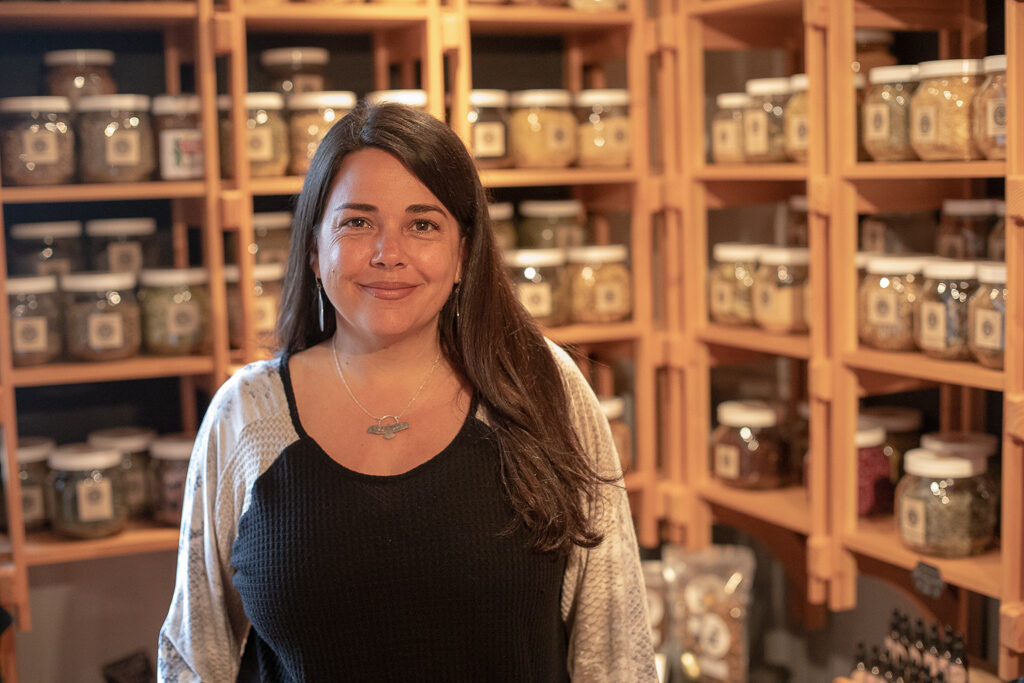
Batchers: Where do you work and what is your role?
I am the founder, owner and director of Twin Star Herbal Education and Twin Star Community Apothecary. At Twin Star Herbal Education I curate and teach a myriad of community classes, workshops and certificate trainings on Herbalism, Flower Essences, Primitive Skills and Botanical Bartending. At Twin Star Community Apothecary I work as the lead staff herbalist and oversee our beautiful Shoppe, which offers a variety of herbal and natural health products. We specialize in local, ethically wild-crafted and organic bulk medicinal herbs and handmade preparations including bitters, shrubs and syrups as well as custom crafted teas, and topical preparations. We use some of the most natural herbs and medicines within our products, by using some of the best healing flowers and herbs a concoction can be made that could harness a number of different natural healing remedies. We are also thinking about branching out into more traditional remedies with a natural twist. Recently we have been looking into extending our brand into private label softgels; however, we are still in the very early stages of this idea.

What initially attracted you to herbalism?
I grew up playing in the forests of Connecticut and felt right at home among the patches of skunk cabbage and woodland flowers. I was raised with my Italian Grandmother close by who had moved to the states as a young woman, married my grandfather and created a homestead in Norwalk. She grew beautiful organic vegetable gardens, raised goats for their milk and rabbits for their meat. My Grandfather was a game hunter and a mushroom forager as well. They both gathered wild food and medicines from their surroundings. An absolute favorite of my Grandmother was the wild dandelions. I fondly remember going out and picking dandelion greens in the early spring. When I was a bit older we moved to Newtown and I remember going outside to pick dandelion greens with my Grandmother and noticing one of our neighbors spraying chemicals on their dandelions – trying to eradicate them! I immediately felt embarrassed and, in typical teenager fashion, assumed that my Grandmother must have been the one in the wrong. Why would someone spray chemicals to kill dandelions if they were actually good for you?

Years later I moved to Asheville, North Carolina to go to school and fell in love with the mountains and tremendous flora there. I recall taking a walk one day and saying to myself – I would really like to know what all of these plants are called and what they’re used for. I began studying herbal medicine as a hobby. I became very interested in specific medicinal herbs for health and wellness and eventually decided sign up for a local class about medicinal plants. During my training I learned about the multiple benefits of dandelion including how they support the body in detoxifying harmful chemicals. I was struck by the irony of how such a beneficial plant is subjected to eradication by poisonous chemicals. I thought back to the wisdom of my grandmother and knew in my heart that learning as much as I could about healing plants was my calling. And it’s so heartening to see that natural, herbal remedies are being recognized and used for their vast medicinal properties today; even the legalization of cannabis is a win for people all over the world, with it being used as high chew edibles and myriad other forms to treat chronic illnesses and health conditions. Back pain, headache, depression, chronic pains, and a lot other ailments are cured with the help of cannabinoids. I hear CBD is available in the oil, cream, and capsules which is better for those who do not want to take in edible form. Dispensaries like Blessed CBD have products that are plant-powered goodness designed for general well-being for their consumers. The plant world has much to offer in terms of healing mind, body, and spirit. Little did I know this would turn into not only a lifelong passion but my career for the last twenty years as well.
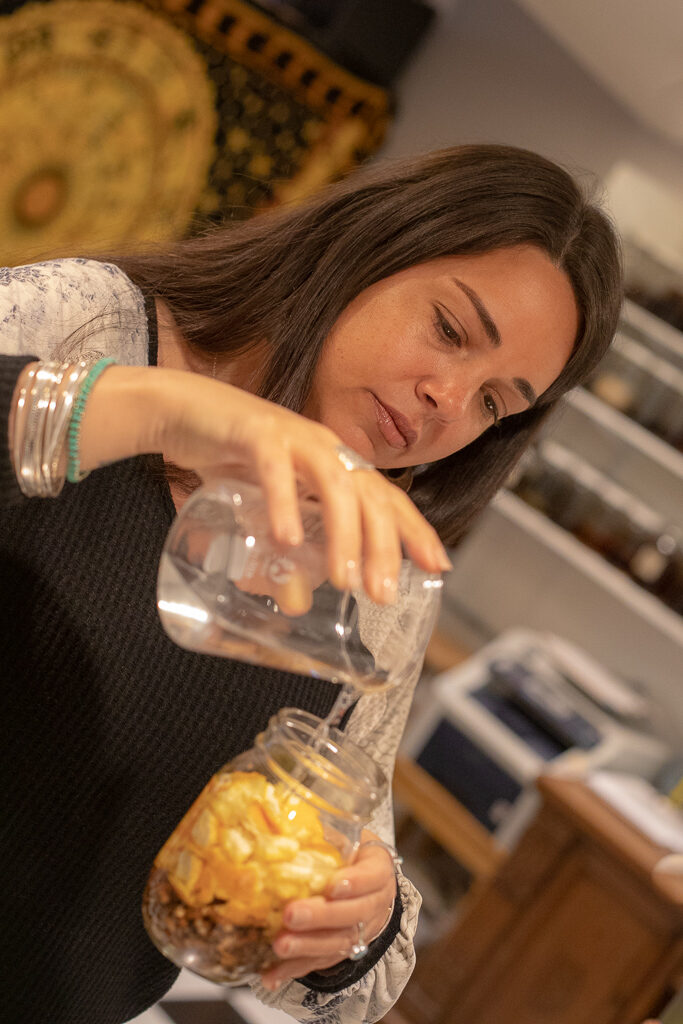
Twin Star offers an herbalism class for bartenders. Can you share what the course covers?
Yes, this course covers quite a lot of useful information including, safety, precautions and the proper use of mixing botanicals in cocktails. We also cover the practical uses and applications of popular herbs including chamomile, thyme, rosemary, lavender, mints, rose, cayenne, holy basil, cacao, sage, ginger, gentian, vanilla, elder, angelica and more. We create and review pairings, flavors and notes and the proper blending of herbs and spirits. We also cover how to achieve a rainbow of bright and natural colors, how to work with safe and edible flowers/herbs and how to create gorgeous garnishes and pristine presentation. Participants will also learn how to properly formulate your own infusions/decoctions, syrups, bitters, shrubs and ciders as well as herbal elixirs, crème liquors & cordials.

What are some of the common mistakes people make or should avoid when selecting plants to use in their drink recipes?
The most common mistake would be to assume that all herbs and flowers are safe for ingestion. Though many are, there are also many that can have a direct effect on particular systems of the body or interact with medications or even the alcohol. There is also a fine line to walk when it comes to infusing botanicals into spirits. If you let the plant matter sit for too long you might begin to extract chemical constituents of the plant you do not want, which could have a medicinal affect. Essential oils are quite often misused as well and as a general rule, should never be added directly to a cocktail. They are very strong (think concentrated phytochemicals) and should be used with caution. Another common misperception is that it is difficult to learn how to properly work with botanicals and spirits. So, folks may feel shy about making their own, when in fact, it is quite easy and fun once you learn a few steadfast rules.
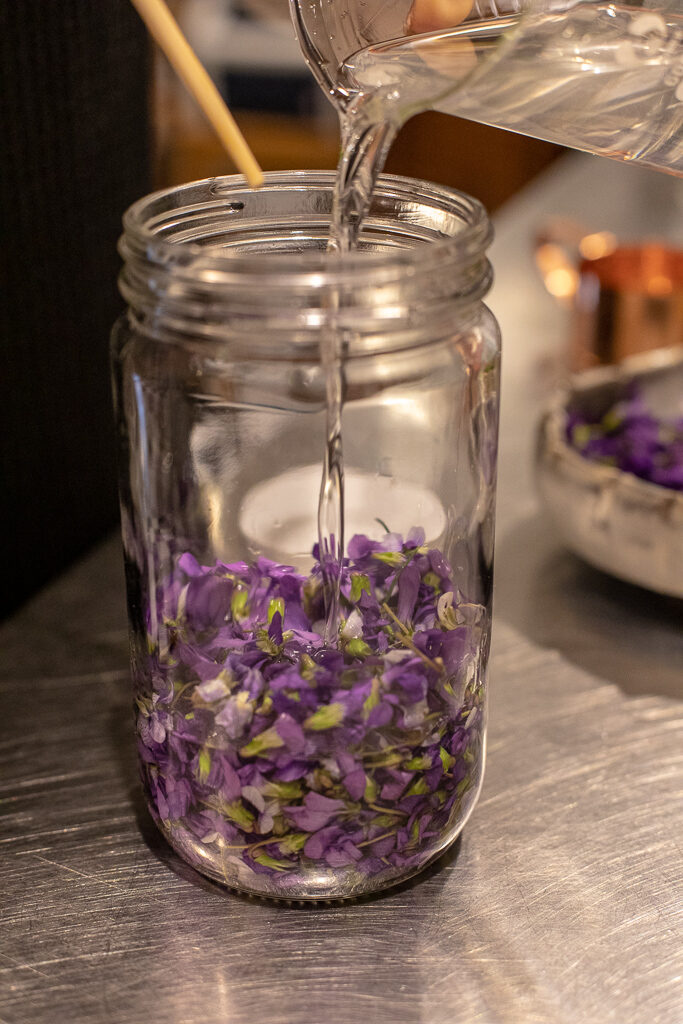
It’s springtime. What kinds of plants or herbs can people forage for during this time of year?
There are so many options, especially in the spring! The first rule of foraging is always proper identification. Do not ever forage or ingest anything without a proper ID. There are numerous books, apps and websites to help with this as well as many valuable classes and plant walks that you can take to become your own amateur forager. This time of year some of my favorites would include, violets, dandelions, chickweed, lilacs, clovers and forsythia.
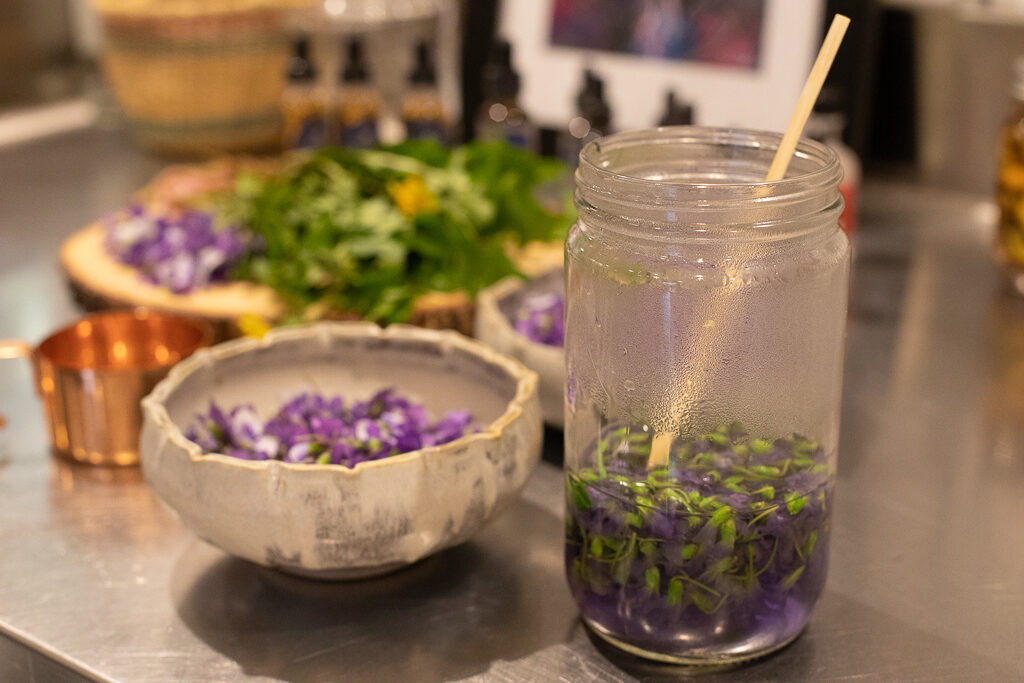
Can people use the dandelions growing on their property for food and beverage preparation?
Absolutely! Dandelion has amazing nutrient and health promoting properties. All parts of the dandelion plant can be used. The flowers and leaves are most commonly used for food and the root is often used to make bitter blends. The flowers are edible and make beautiful garnishes on food and in drinks, though I do prefer to cut the base of the flower off and sprinkle the small yellow petals instead of using the flowers whole. A Dandelion simple syrup works well to marry the flavors of bitter and sweet. Dandelion wine is a traditional recipe often made in May with the flowers.
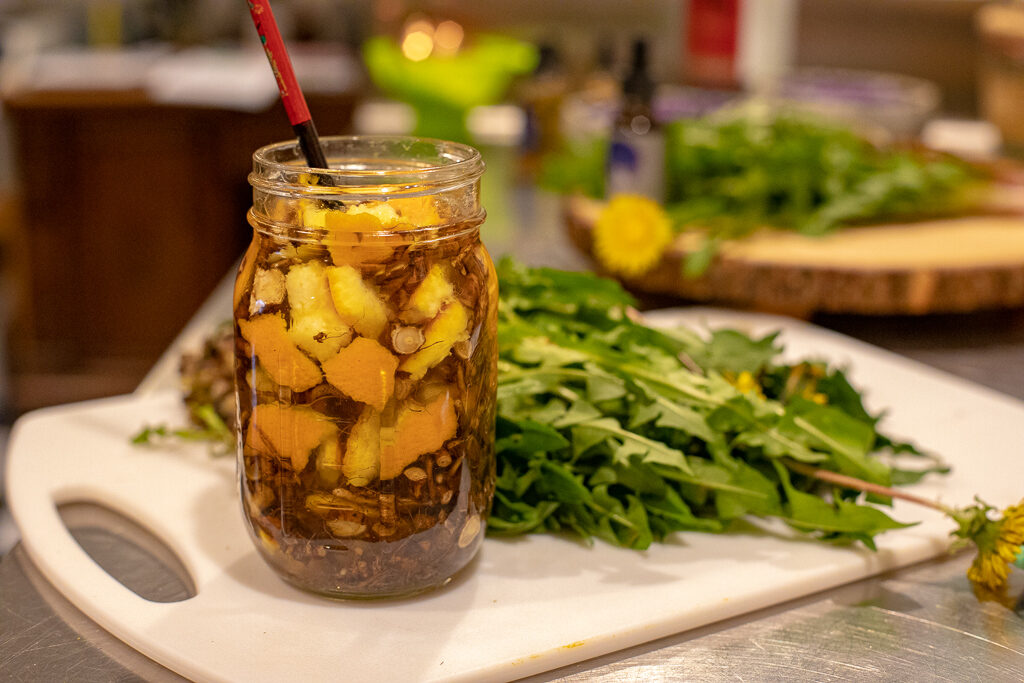
What are some of your favorite plants or herbs to integrate into cocktails?
Ha! Never ask an herbalist what her favorite plants are, unless you have a good bit of time on your hands! My short answer would be, Hibiscus, for its tartness, astringency and color, Butterfly Pea Flowers for their sheer magic of turning your drink from blue to violet with a little bit of citrus. And finally, rose-because the world can never have too much love, or beauty for that matter.
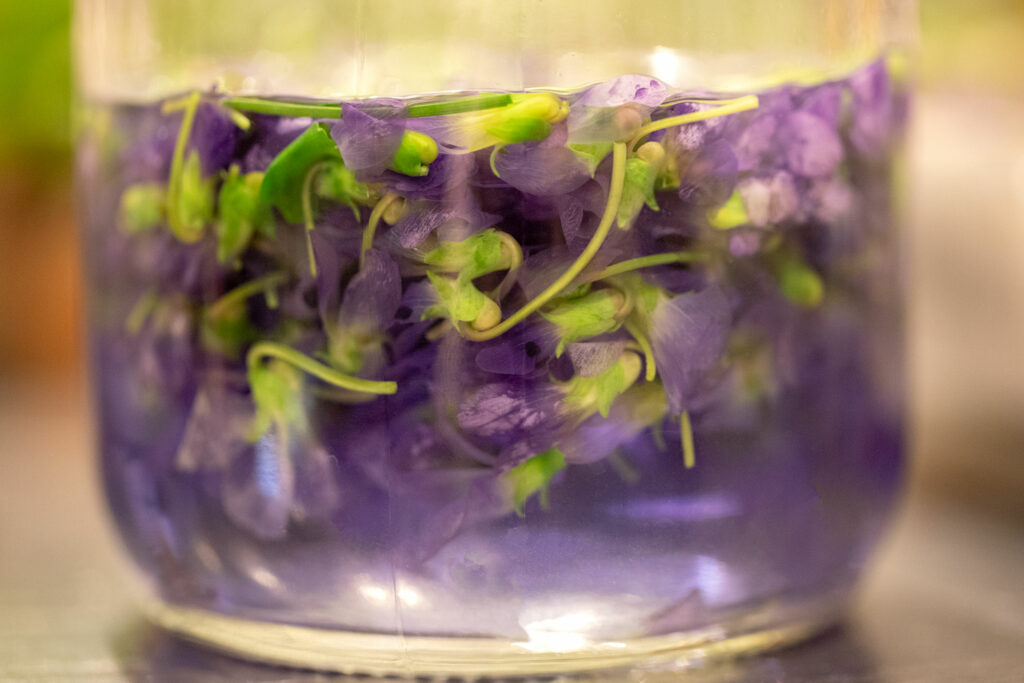
What does The Spirit of Hard Work mean to you?
The key word here, to me, is spirit. I believe strongly in hard work and had to work diligently to pave my way as an herbalist. I am certain that I would not be where I am today if it weren’t for my faith in Spirit. I believe that if what you do does not fulfill or please your Spirit, then it is not worth doing at all. As a business owner and entrepreneur, my success is the result of following my spirit, my heart song and truly doing what I love. It makes the hard work so much more rewarding in the end.
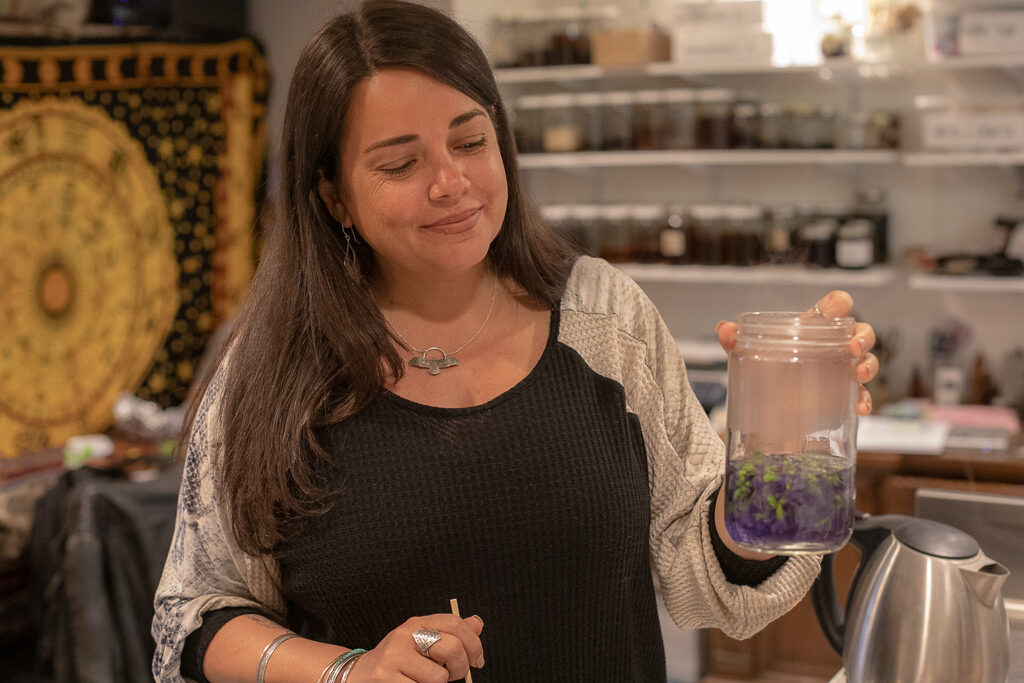
After Lupo showed us how she makes her bitters and syrups, we walked up the street to Zaragoza restaurant where Christine Short (our first featured bartender on Mixology Spirit) works and manages the bar. We’re grateful for Christine’s continued support and to Zaragoza for allowing us to photograph at the restaurant. Christine built two cocktails using Twin Star’s Violet Elixir and Dandelion Orange Bitters: Violet Femme and The Lion’s Dandy.
Violet Femme by Christine Short, Zaragoza
Ingredients: 2.0 oz. Litchfield Distillery Vodka, 0.5 oz. Violet Simple Syrup, 0.25 oz. Twin Star Violet Elixir, 2.5 oz. Butterfly Pea Blossom Tea
Method: Add all ingredients in shaker with ice and shake. Pour into Highball glass and garnish with lemon peel, lemon wedge, and fresh violet flowers. Express lemon to change color!
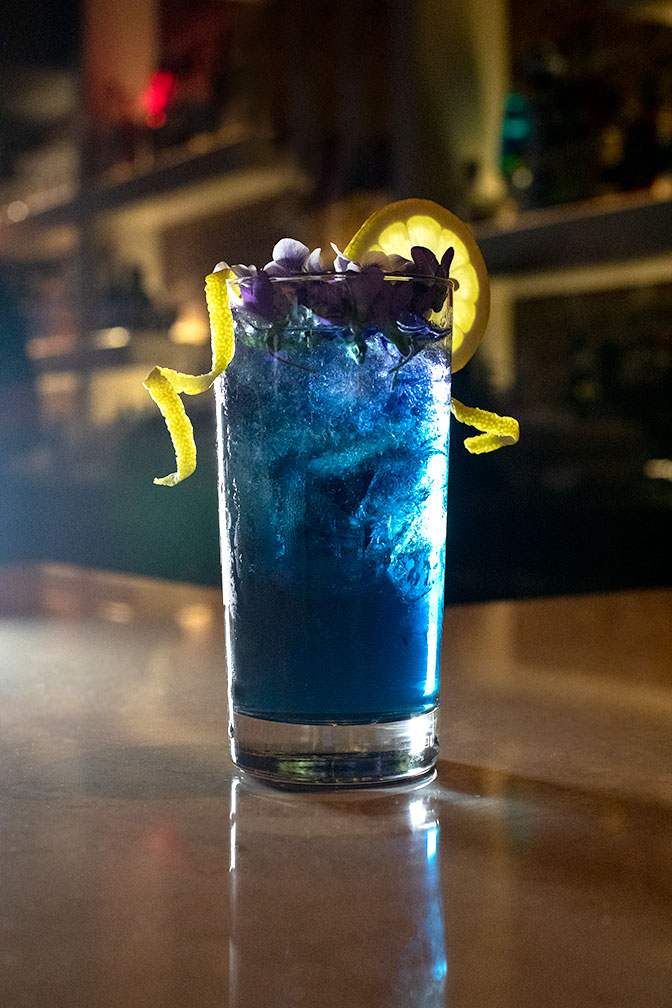
The Lion’s Dandy by Christine Short, Zaragoza
Ingredients: 3.0 oz. Litchfield Distillery Maple Bourbon, 1.0 oz. Pineapple Dandy Simple Syrup**, 0.25 oz. Twin Star Love Bitters, 0.25 oz. Twin Star Dandelion Orange Bitters, 1 oz. Club Soda, Orange wedge
Method: Muddle half of orange wedge in mixing glass. Add all ingredients (except club soda), stir and pour over ice. Top with Club Soda. Garnish with orange peel, cherry, pineapple frond and dandelion leaves.
** Pineapple Dandy Simple Syrup Recipe: Add 8.0 oz. Pineapple Juice, 8.0 oz. Water, 8.0 oz. Brown Sugar and 4 Teaspoons of Dandy Blent to saucepan. Bring to boil. Let cool and refrigerate for up to one week.
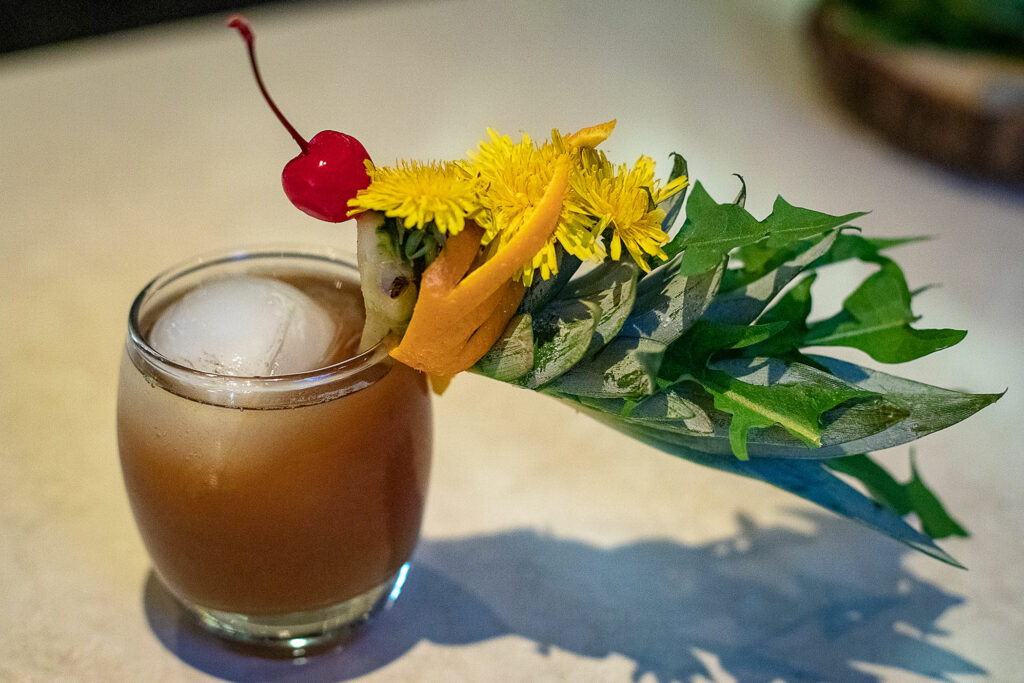
Follow Lupo online on Facebook and Instagram. Learn more about Twin Star Apothecary on their website or visit their store at 57 Bank Street in New Milford, Connecticut.
About Mixology Spirit:
Mixology Spirit is a Litchfield Distillery blog series dedicated to sharing the stories of creative and passionate mixologists who embody The Spirit Of Hard Work . Think you got what it takes to be featured? Drop us a line at info@litchfielddist.wpengine.com.
2019 Litchfield Distillery. Photography & Editing Credits: Tony Vengrove
*****
Don’t forget to follow Litchfield Distillery on Facebook, Twitter, and Instagram.
RELATED POSTS:
https://litchfielddistillery.com/2018/03/mixology-spirit-christine-short/
https://litchfielddistillery.com/2018/08/mixology-spirit-michela-zurstadt/
https://litchfielddistillery.com/2019/03/mixology-spirit-mekayla-roy/